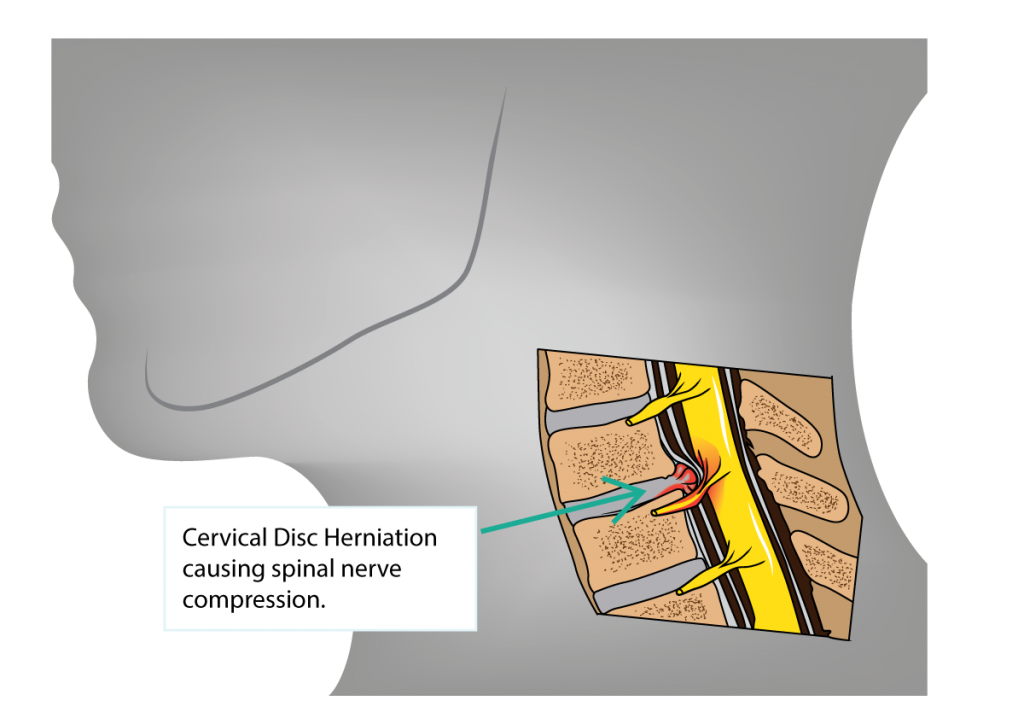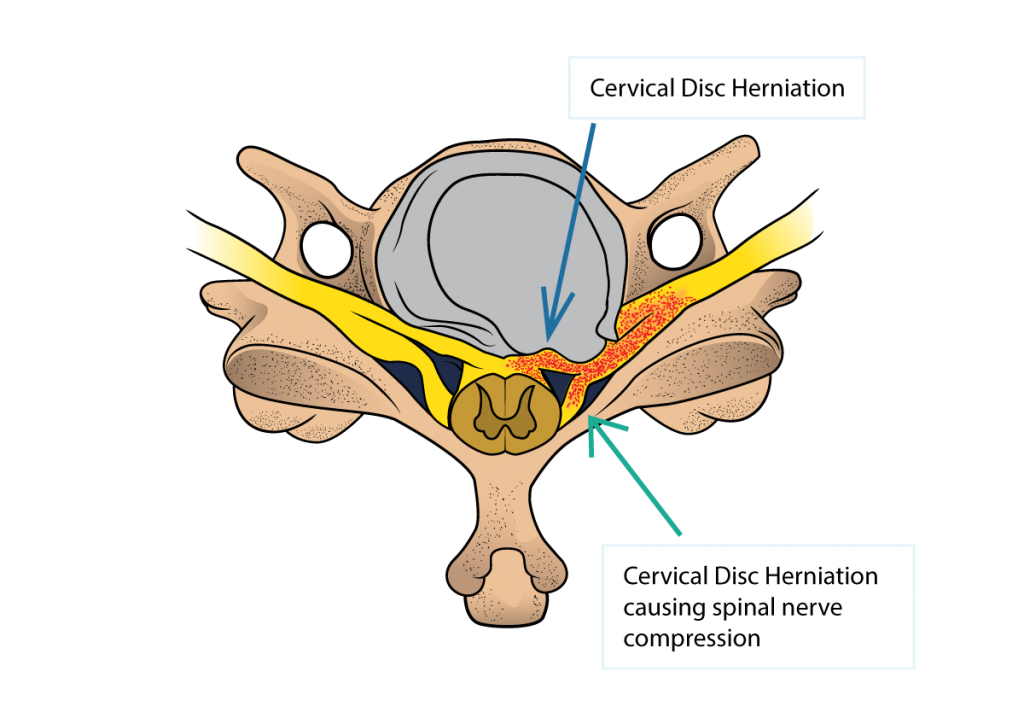Dr Lee treats all conditions of the cervical spine.


Cervical disc herniation is a condition where bulging or protrusion of disc material of the cervical spine occurs, causing spinal cord compression or spinal nerve compression.
Cervical radiculopathy, also referred to as trapped nerve of the neck, is a condition typically caused by cervical disc herniation or bony overgrowth (bony spur or osteophyte), which causes shooting pain down the arm. Patients may experience numbness in the arms or hands too, and very rarely may experience weakness of the muscles due to nerve damage.
Many cervical spine conditions will not require surgical treatment, unless there is evidence of spinal cord or spinal nerve damage. Dr Lee may suggest a non-operative treatment plan for your condition. If the non-operative treatment fails, then surgery may be required.
Dr Lee performs the following surgeries for cervical disc herniation and cervical radiculopathy:
- Anterior Cervical Discectomy and Fusion (ACDF)
Anterior cervical discectomy and fusion, or ACDF, involves the removal of the affected disc and joining the bone segments of the cervical spine together, typically using a cage packed with bone graft. - Cervical Disc Replacement
Cervical disc replacement involves removal of the affected disc, replacing it with an artificial disc. This surgical procedure preserves some movement between the bone segments of the cervical spine.
Dr Lee will discuss these treatment options with you if surgery is required.
Dr Lee is experienced in performing each of the techniques used for cervical spine treatment, along with the latest minimally invasive spinal surgery techniques. In addition, Dr Lee is also proficient with intraoperative navigation for spinal surgery.

